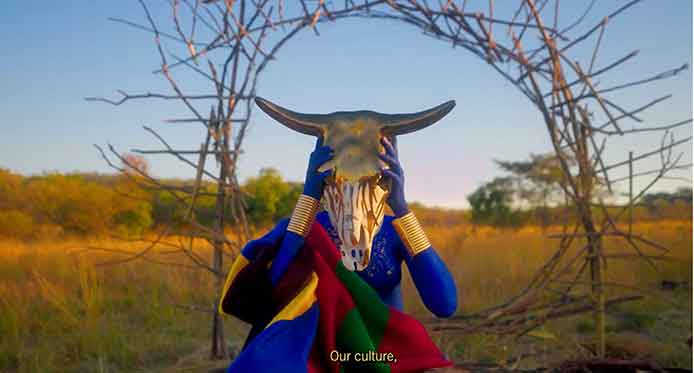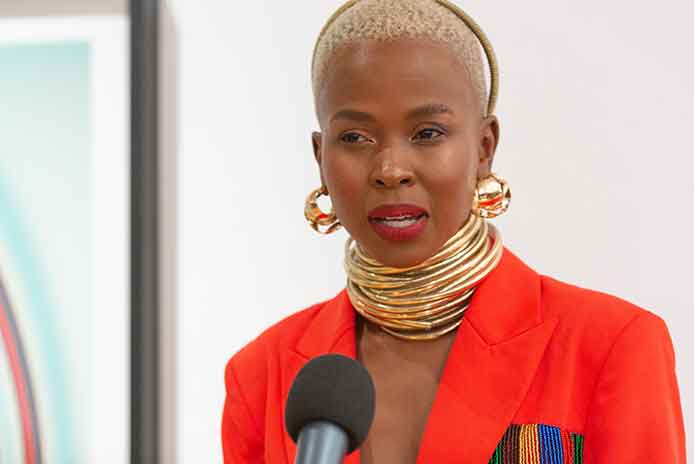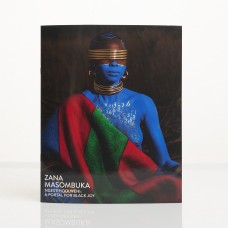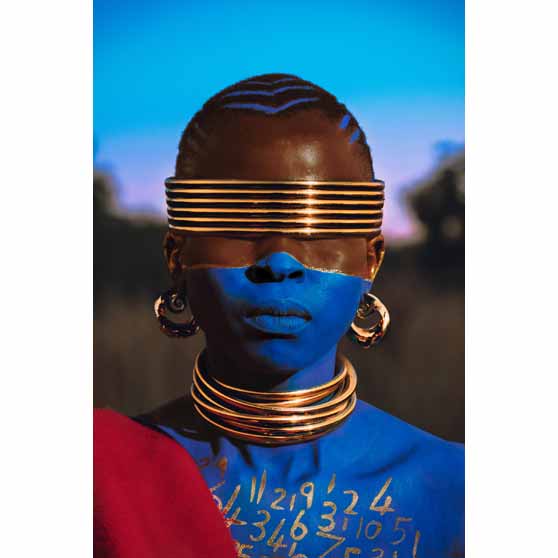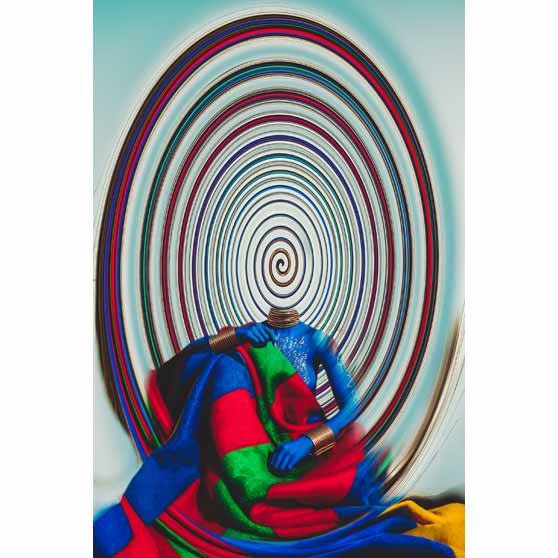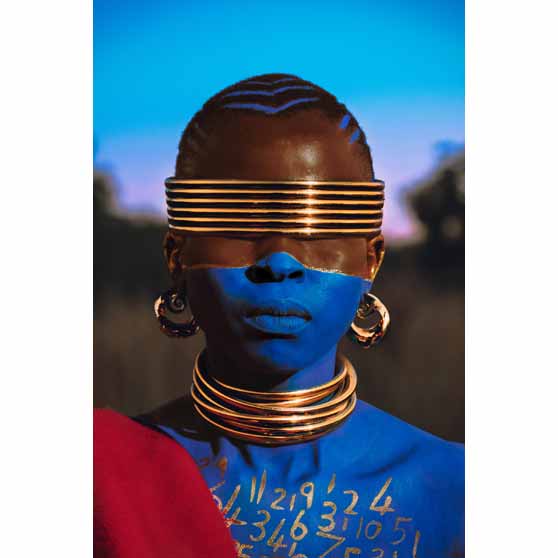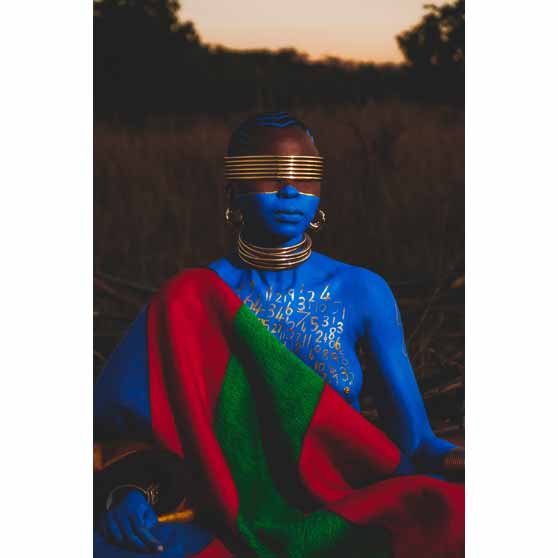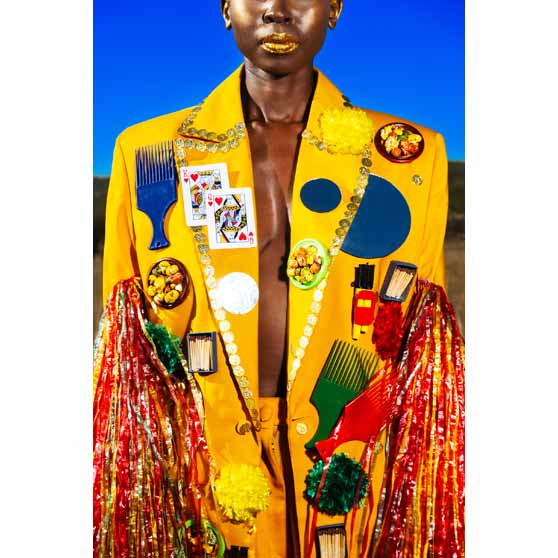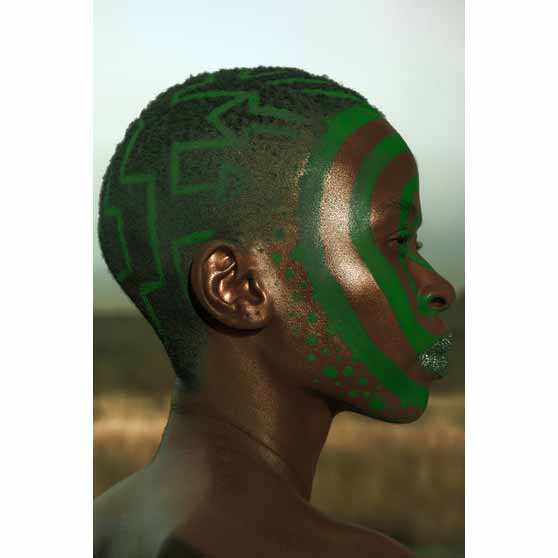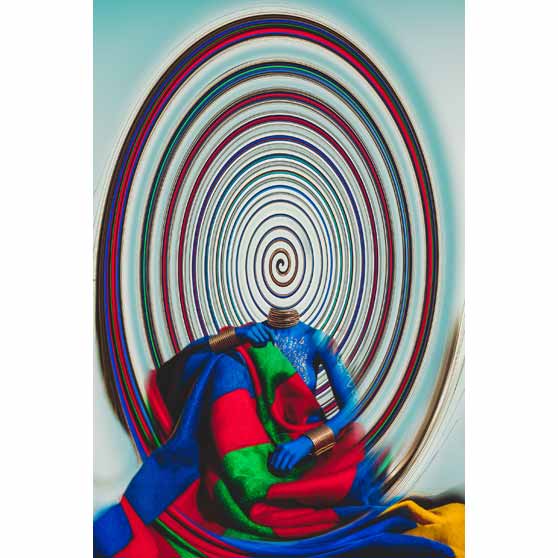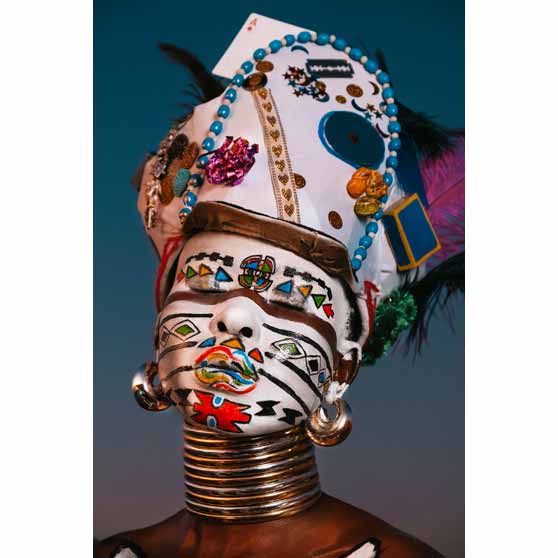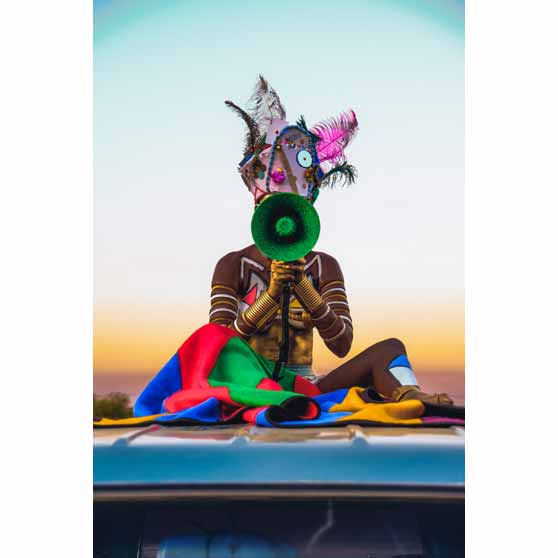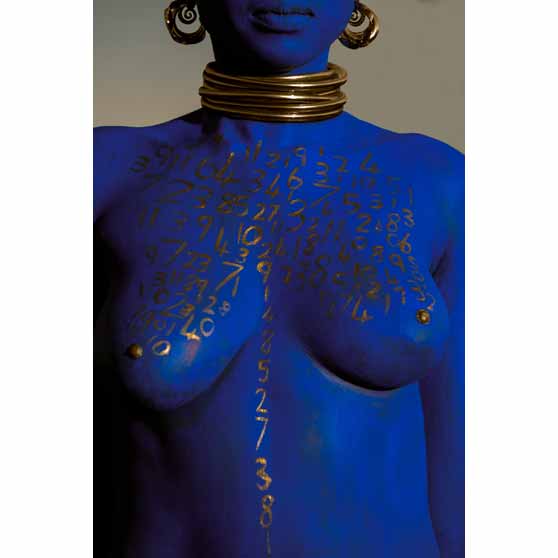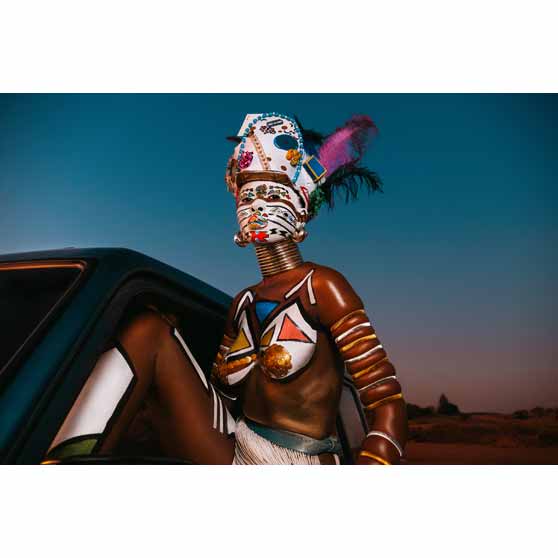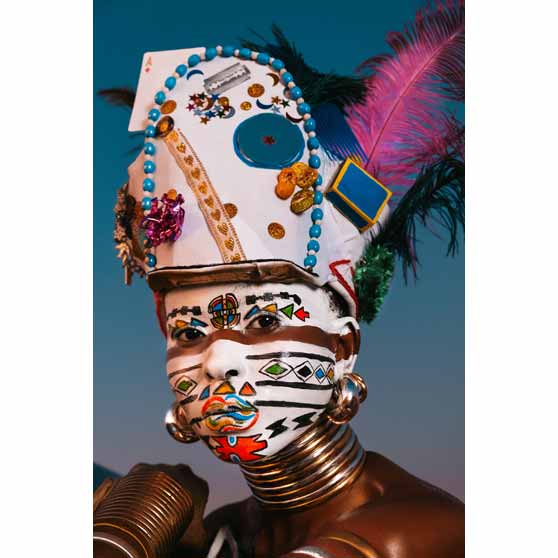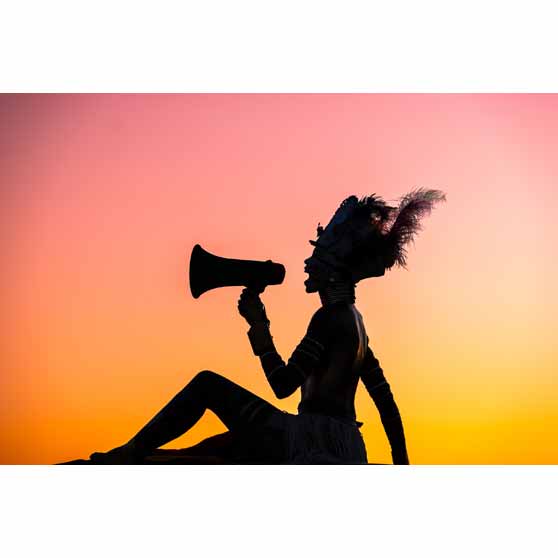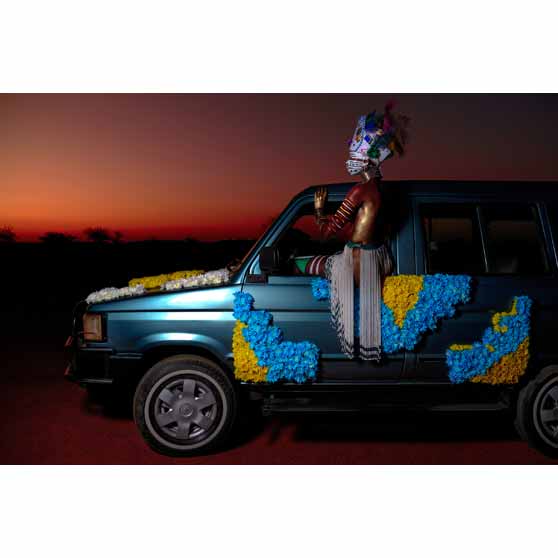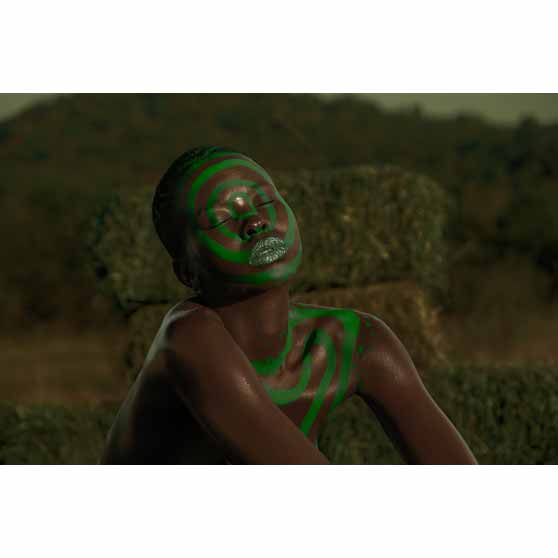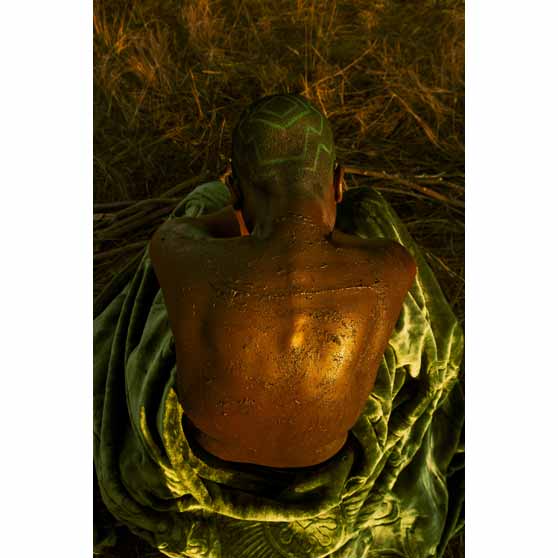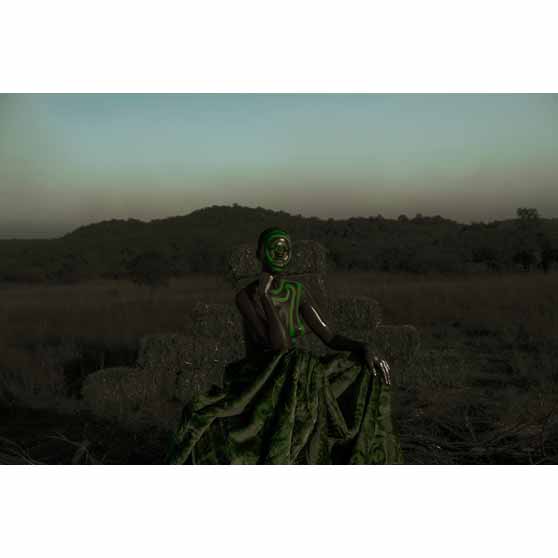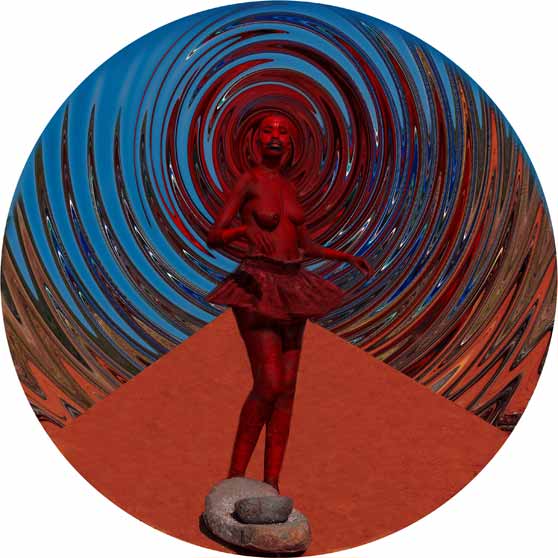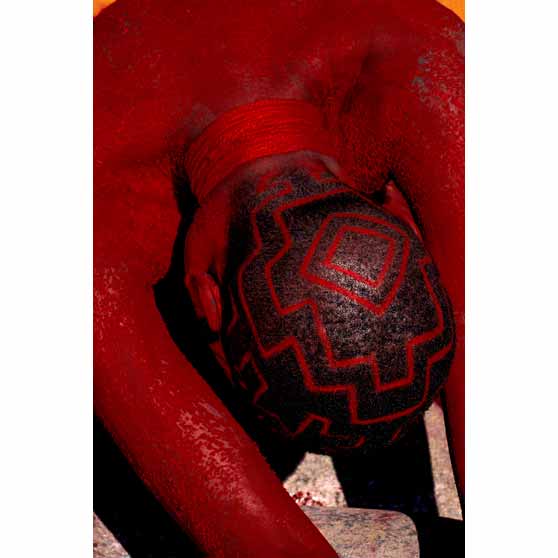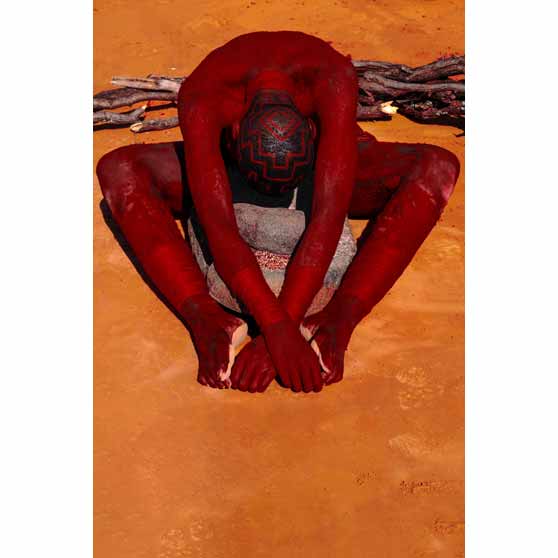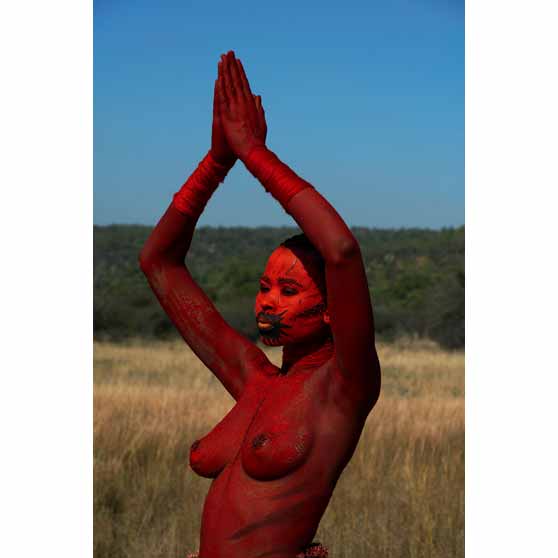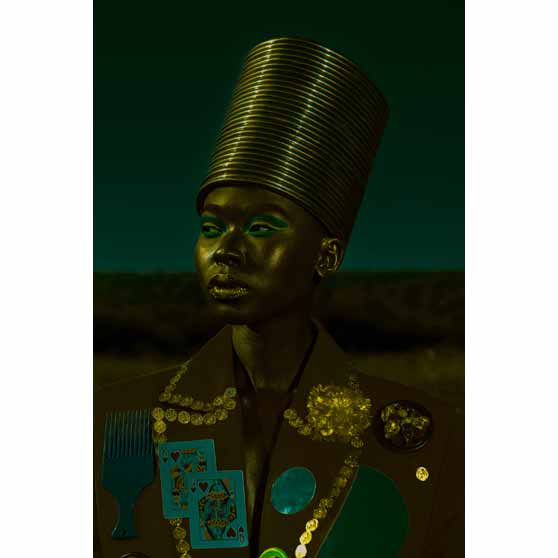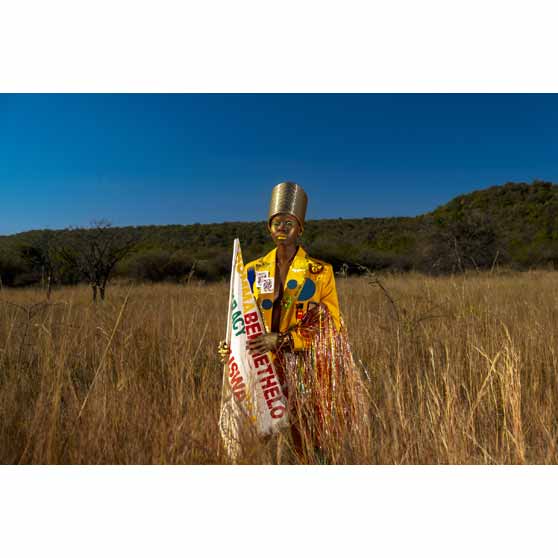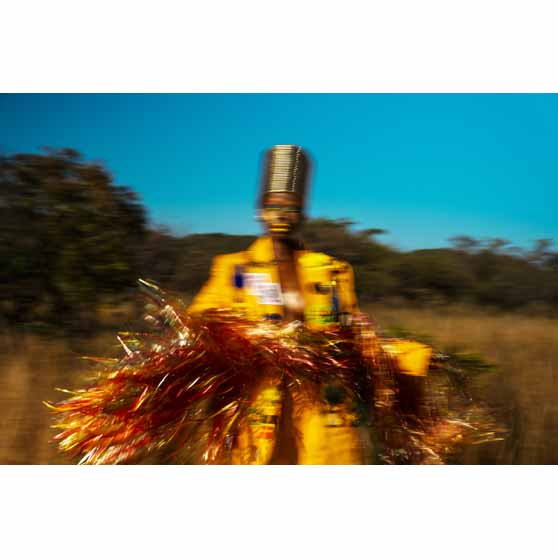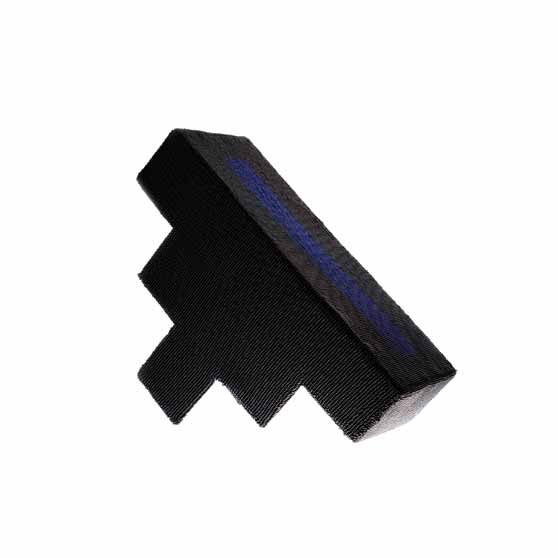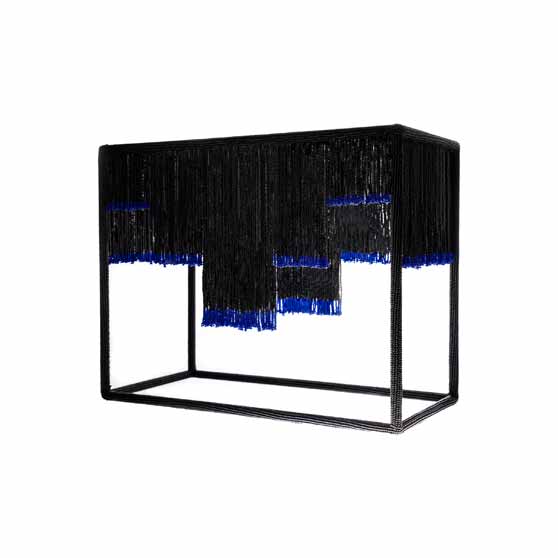ZANA MASOMBUKA: Nges’rhodlweni: A Portal for Black Joy
5 – 30 September, 2023
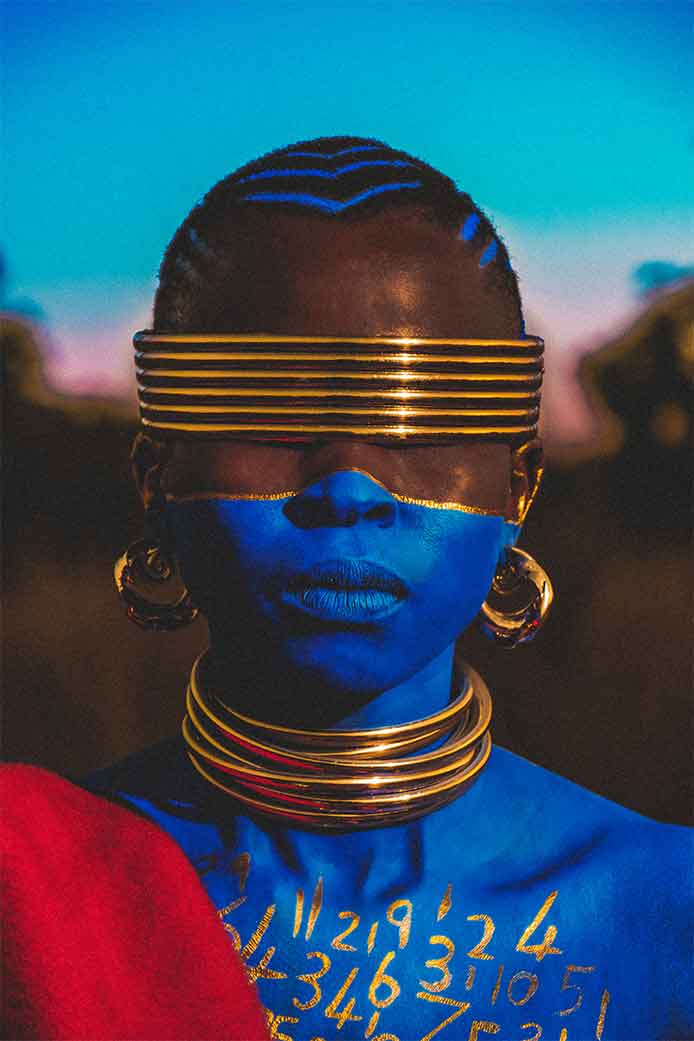
Giclée print on Hahnemühle FineArt Baryta 325 gsm paper, 84 x 56 cm.Edition of 8.
© Zana Masombuka, John Baloy and Bontle Juku.
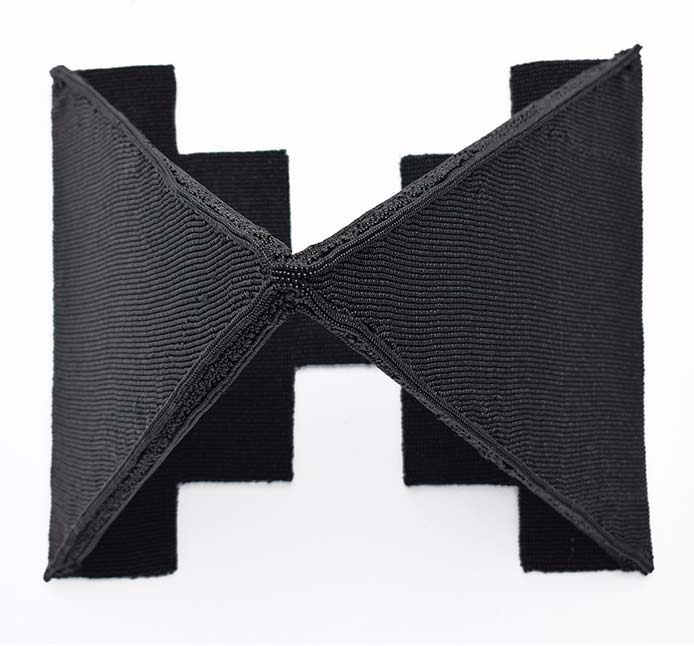
Steel, beadwork, thread, 50 x 40 x 35 cm.
Nges’rhodlweni: A Portal for Black Joy showcases a body of work which has been developing over the last three years. The title refers to a special space in the Ndebele household, where people of all ages gather to share in the communion of art, creating a site of expression for the entire community. This sacred space encourages connection to the Enas (spirit), which permits manifestations of a heightened sense of joy. This euphoria is recognised as creative energy and is a prerequisite for the exchange of essential knowledge. Masombuka describes how being present and open to one's community in this preserved space facilitates the growth of knowledge within each individual, something fundamental to the evolution of culture. For the Ndebele community such transmission is not considered linear but instead is imagined as being cyclical, hence infinite and unbounded.
A highlight of the exhibition is a short film that uses archival family footage of initiation ceremonies, juxtaposed with contemporary shots of ritual performances and storytelling. Masombuka is at once both artist and subject, and by situating herself within the narrative frame she invites the viewer to re-construct each individual persona she reveals. The film follows the process of preparation for a traditional Ndebele ceremony—the enacted formation of a portal of joy —which honours the participants’ emotional vulnerability. With each scene, Masombuka employs distinct motifs, such as circles, geometric patterns, nature, etc., all of which evoke Ndebele ancestral culture. Before this powerful visualisation of the spiritual realm, the viewer, like each of the artist’s subjects, participates in a journey from pain through healing to rebirth, within the protected space and always accompanied by joyful celebration.
The artist’s short film is complemented by a series of powerful photographs representing various ceremonial spirits. Also on display in the space will be beaded steel sculptures, influenced by the intricate geometric patterns of Ndebele beadwork and traditional woven cloth. The overlay of beadwork on these abstract sculptural forms is a contemporary tribute to the importance of beading, which for centuries was used by the Ndebele people as a means of communication. These sculptures underline Masombuka’s ongoing investigation into how intergenerational knowledge is transmitted and how this exchange informs identity in the modern world.
As these different elements combine, Masombuka’s ability to interrogate her Ndebele identity gives the viewer much to ponder. In representing ceremonial details that engage the healing powers of nature and community—using joy as the pivotal emotion— Masombuka opens the rich seam of her ancestral knowledge for others to appreciate, even as she assures the continuing evolution of her own cultural inheritance.
Please be aware that the exhibition contains some nudity.



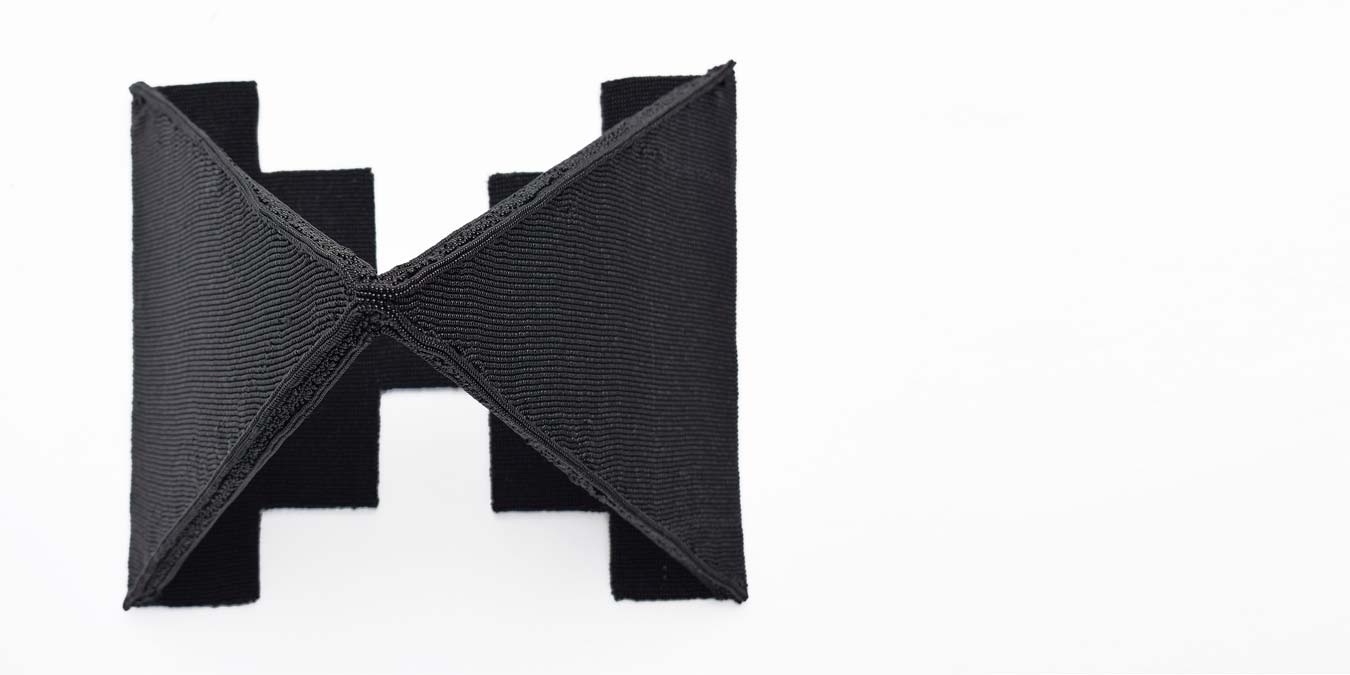
0467-copy-4.jpg)
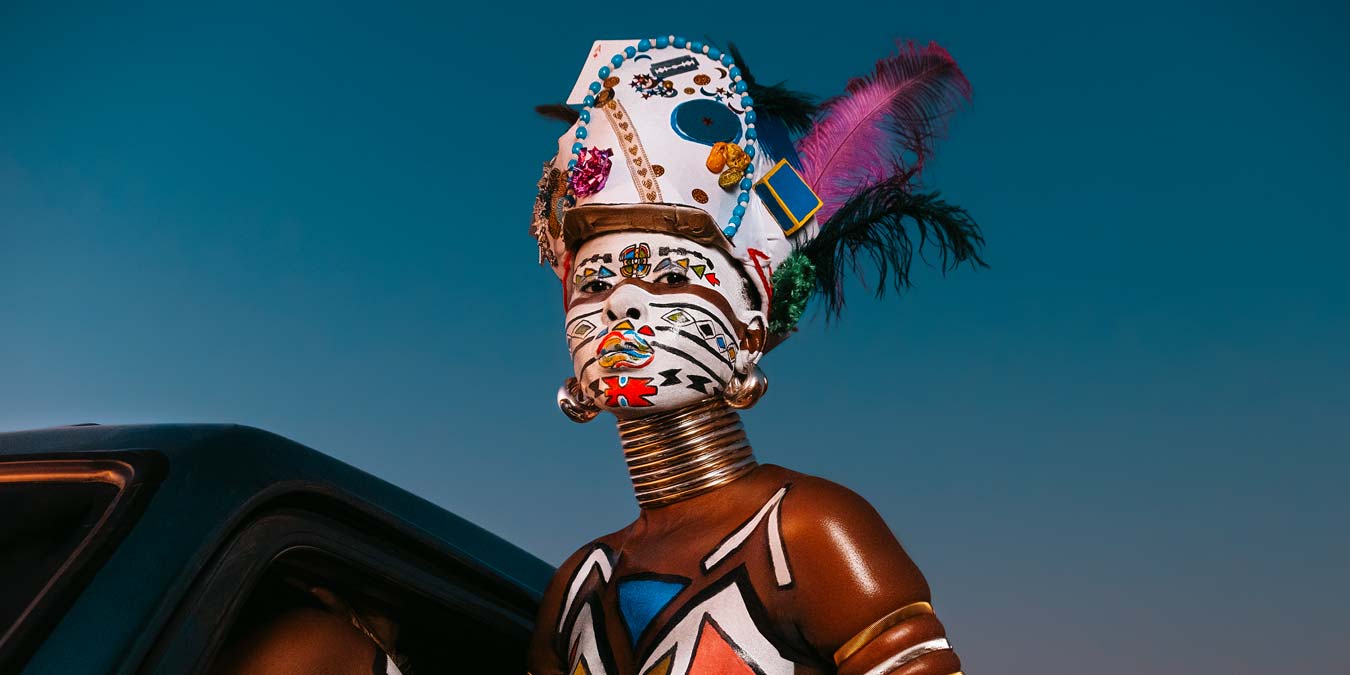
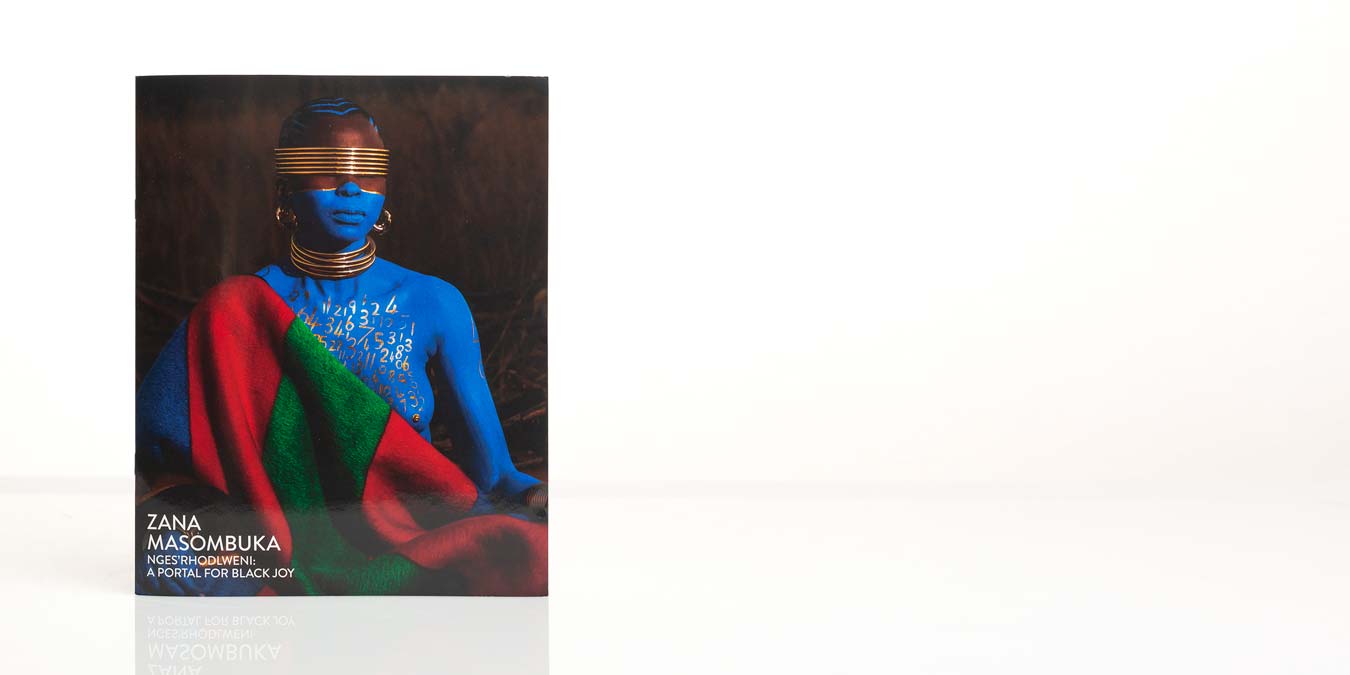
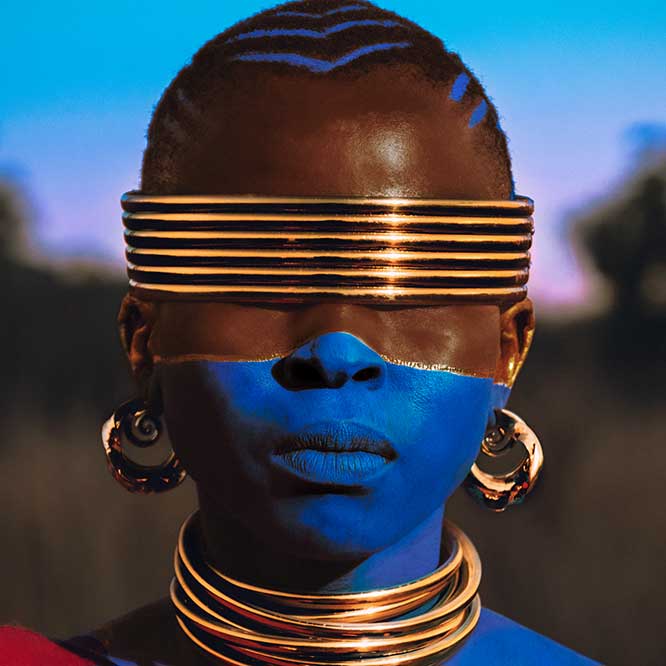

0467-copy-4.jpg)


